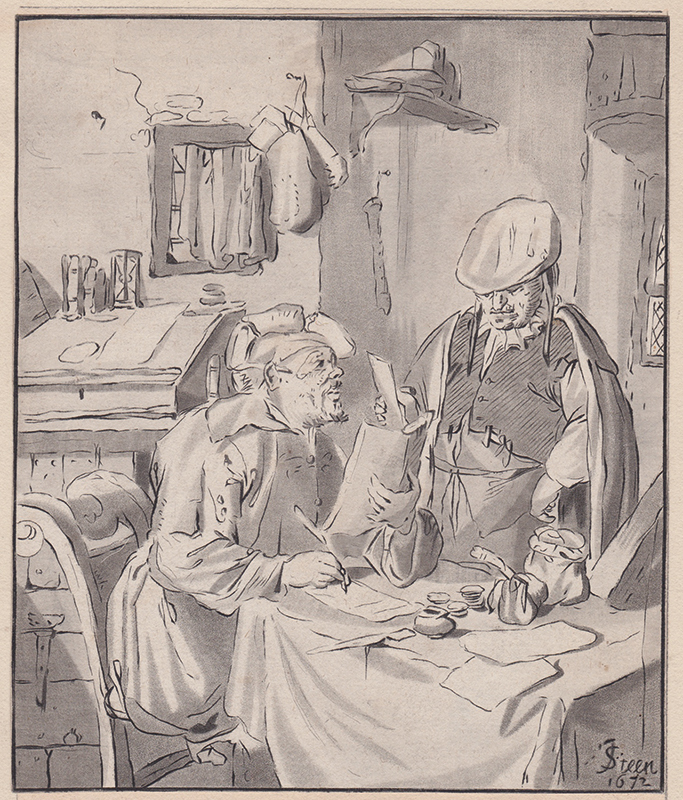
19th, 20th & 21st Century Fine Prints
707-546-7352 · fax 707-546-7924 · web: www.annexgalleries.com · email: artannex@aol.com
"La Lecture de la Lettre" (Reading the Letter), after Jan Steen by Cornelis Ploos van Amstel

"La Lecture de la Lettre" (Reading the Letter), after Jan Steen
Cornelis Ploos van Amstel
"La Lecture de la Lettre" (Reading the Letter), after Jan Steen
Cornelis Ploos van Amstel
1726 - 1798 (biography)Cornelis Ploos van Amstel and his assistant, Rembrandt student Cornelis Brouwer reproduced drawings of the Masters using a unique transfer technique with added roulette and burnishing that he developed in the mid 18th century. This example, done between 1781-1786, is after a wash drawing by Dutch Master Jan Steen (1626 - 1679) originally done in 1672, over 100 years before practical photography was invented.
Arthur Edwin Bye wrote an article on Amstel's work and techniques in the Print Collector's Quarterly, Volume 13, No. 4, December, 1926:
"A man of wealth, he (Amstel) was a drawing collector with over 5,000 drawings by 16th and 17th century masters. Between 1765 and 1787 he produced 46 facsimilies, in editions of 300 - 350 impressions.
His work in printmaking was studied by Dutch connoisseur N. G. van Huffel in the early 20th century. Van Amstel used 3 processes to print: to imitate crayon drawings, color mezzotint and a third method that reproduced sepia, india ink and color. For the crayon drawings he traced the original drawing with red crayon on oiled paper, transferred this to a stronger sheet and then finished the drawing by hand. He then put fine copper shavings on the back of the drawing after adding adding a gum to the back. He then took a prepared copper plate and fastened the drawing on it. He then traced his drawing through the paper, which transferred the copper shavings to the plate. When the plate was bitten the lines transferred. He then added roulette and used burnishing to achieve highlights.To copy the watercolor and wash drawings he used a variation on the above technique and added aquatint and/or bit the plate using acid washes and a variation of mezzotint."


